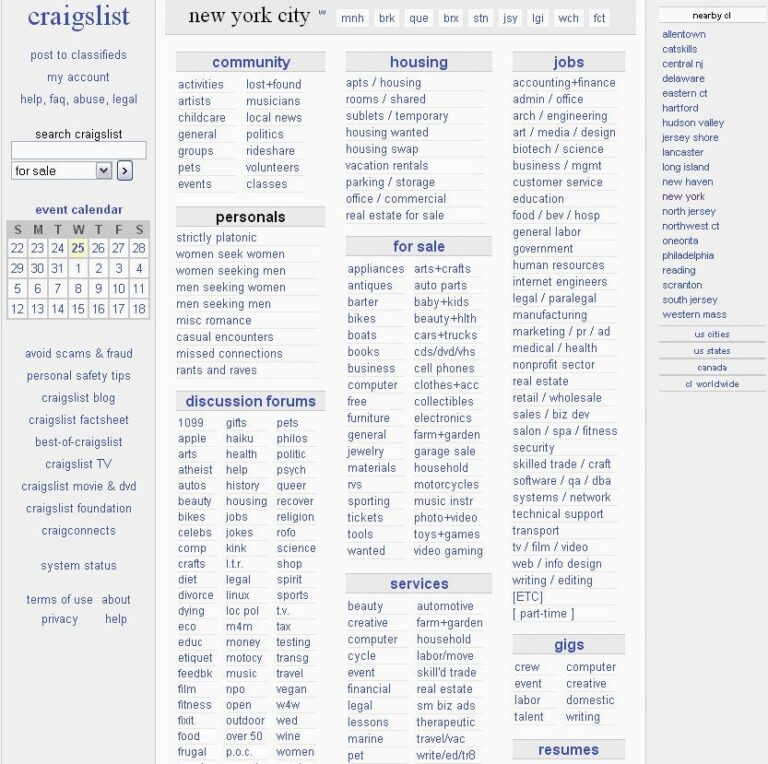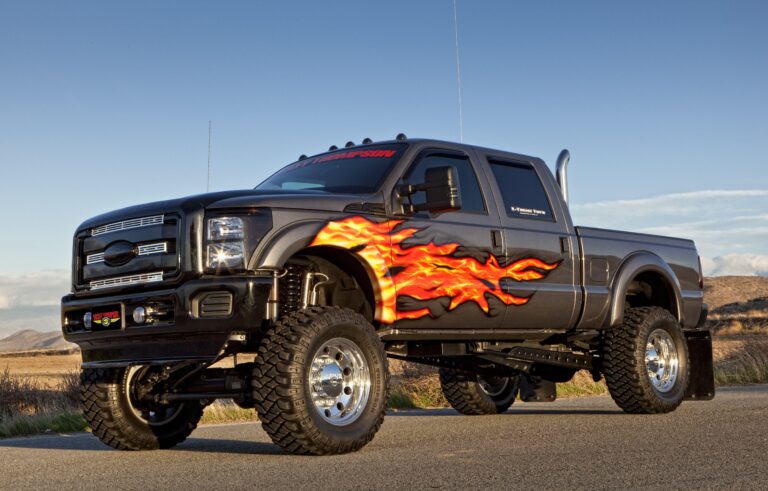90s Model Chevy Trucks For Sale: A Comprehensive Buyer’s Guide
90s Model Chevy Trucks For Sale: A Comprehensive Buyer’s Guide cars.truckstrend.com
Introduction: The Enduring Allure of 90s Chevy Trucks
The 1990s marked a significant era for Chevrolet trucks, introducing a design language and engineering philosophy that would define an entire generation of vehicles. Known internally as the GMT400 platform (1988-2000 for C/K series), these Chevy trucks, including the iconic C/K 1500, 2500, and 3500 series, along with the Suburban and the nascent Tahoe, became synonymous with American utility, rugged reliability, and timeless style. Today, finding a 90s model Chevy truck for sale is more than just a transaction; it’s an opportunity to own a piece of automotive history, a versatile workhorse, or a blank canvas for customization. Their enduring popularity stems from a blend of straightforward mechanics, robust construction, and a distinctive aesthetic that continues to resonate with enthusiasts, collectors, and practical buyers alike. Whether you’re seeking a dependable daily driver, a restoration project, or a capable off-roader, a 90s Chevy truck offers a compelling proposition in today’s used vehicle market. This comprehensive guide will navigate you through the world of 90s Chevy trucks, helping you make an informed and satisfying purchase.
90s Model Chevy Trucks For Sale: A Comprehensive Buyer’s Guide
The Enduring Appeal: Why 90s Chevy Trucks Remain Popular
The lasting fascination with 90s Chevy trucks isn’t merely a matter of nostalgia; it’s rooted in a combination of tangible benefits and a certain intangible charm.
- Rugged Reliability and Durability: Built with a focus on utility and longevity, these trucks are renowned for their robust frames and relatively simple mechanical systems. The Vortec V6 and V8 engines (particularly the 5.7L Vortec) are widely regarded as bulletproof when properly maintained, capable of enduring hundreds of thousands of miles. This inherent durability translates to lower long-term ownership costs compared to many modern, more complex vehicles.
- Timeless Design: The GMT400’s clean lines, squared-off yet aerodynamic profile, and classic proportions have aged gracefully. Unlike some designs that quickly become dated, the 90s Chevy truck maintains a classic, purposeful look that appeals across generations. This makes them excellent candidates for both period-correct restorations and modern custom builds.
- Versatility: From hauling heavy loads and towing trailers to serving as reliable daily commuters or venturing off-road, these trucks are incredibly adaptable. Their robust construction and available 4×4 systems make them capable in various environments and for diverse tasks.
- Ease of Maintenance and Parts Availability: Thanks to their widespread production and mechanical simplicity, parts for 90s Chevy trucks are abundant and often inexpensive. Most repairs can be performed by a competent DIY mechanic, and finding specialized shops for more complex work is rarely an issue. This significantly reduces the barrier to entry for ownership and makes long-term upkeep manageable.
- Affordability and Value Retention: While prices for exceptionally clean examples are on the rise, 90s Chevy trucks generally offer excellent value for money compared to newer models. Their proven track record and rising classic status suggest that well-maintained examples will likely retain, or even appreciate in, value over time.

Key Models and Configurations of the 90s Era
The 1990s saw Chevrolet produce a diverse range of trucks under the GMT400 umbrella, each with its own characteristics and target audience. Understanding these models is crucial for finding the right fit.
- Chevy C/K Series (1988-2000): This is the flagship line, encompassing light-duty to heavy-duty trucks.

- C1500/K1500: The half-ton workhorses (C for 2WD, K for 4WD). Available in Regular Cab, Extended Cab, and Crew Cab configurations, with short bed (6.5 ft) or long bed (8 ft) options. These are the most common and versatile, popular for daily driving, light hauling, and custom projects.
- C2500/K2500: The three-quarter-ton trucks, offering increased payload and towing capacity. Often equipped with stronger transmissions (like the 4L80E automatic or NV4500 manual) and larger brakes. Ideal for heavier hauling or towing.
- C3500/K3500: The one-ton trucks, often available as dually (dual rear wheels) models for maximum towing and hauling capabilities. Exclusively for serious work.
- Chevrolet Suburban (GMT400: 1992-1999): The full-size SUV based on the C/K truck platform. Offered in 1500 and 2500 series, providing ample passenger and cargo space, along with significant towing capacity. A popular choice for large families or those needing enclosed utility.
- Chevrolet Tahoe (GMT400: 1995-1999): Introduced mid-decade as a shorter-wheelbase, more maneuverable alternative to the Suburban. Available in two-door and four-door variants (the two-door is now particularly sought after). It combined truck capability with SUV comfort.
- Engine Options:
- 4.3L Vortec V6: Standard in many 1500 models, offering decent fuel economy and adequate power for light duty.
- 5.0L Vortec V8 (305 cu in): A step up from the V6, providing more power and torque for general use.
- 5.7L Vortec V8 (350 cu in): The most popular and arguably the most reliable engine. Standard in many 1500/2500 models, it offers an excellent balance of power, durability, and parts availability.
- 7.4L Vortec V8 (454 cu in): The "Big Block" engine, primarily found in 2500 and 3500 series trucks, designed for maximum towing and hauling.
- 6.5L Turbo Diesel: Offered as an option, providing strong torque and better fuel economy for heavy-duty applications, though it has some known vulnerabilities (e.g., PMD issues).
- Transmission Options: Common automatics include the 4L60E (light/medium duty) and the more robust 4L80E (heavy duty). Manual transmissions like the NV3500 (light duty) and NV4500 (heavy duty) were also available.

What to Look For: A Buyer’s Checklist for 90s Chevy Trucks
Purchasing a used vehicle, especially one from the 90s, requires a keen eye and thorough inspection. Here’s a practical guide to what to scrutinize:
- Rust and Body Condition: This is often the biggest concern. Check common rust areas:
- Cab Corners and Rocker Panels: These are notorious rust traps due to trapped moisture.
- Wheel Wells and Bed Sides: Especially around the rear wheels.
- Frame: Inspect the entire frame for excessive surface rust, flaking, or, worse, perforations, particularly near suspension mounting points.
- Brake Lines and Fuel Lines: These can corrode, leading to dangerous failures.
- Under the Hood/Battery Tray: Acid leaks can cause significant rust.
- Engine Performance:
- Cold Start: Listen for excessive smoke (blue for oil, white for coolant, black for fuel), knocks, or unusual noises.
- Leaks: Check for oil, coolant, power steering, and transmission fluid leaks. Common spots for oil include valve covers, oil pan, and intake manifold gaskets (on Vortec engines).
- Fluid Condition: Check engine oil (level, color, consistency), coolant (color, presence of oil), and power steering fluid.
- Vortec-Specific: Listen for common Vortec issues like intake manifold gasket leaks (can cause coolant loss or rough idle).
- Transmission:
- Shift Quality: Drive the truck and observe shifts. They should be smooth and firm, not harsh, delayed, or slipping.
- Fluid: Check the transmission fluid level and color (should be red, not brown or black, and shouldn’t smell burnt).
- 4×4 System (if applicable): Engage 4-High and 4-Low to ensure the transfer case engages smoothly and without grinding.
- Suspension, Steering, and Brakes:
- Front End: These trucks are known for wearing out front suspension components. Check for play in ball joints, tie rods, idler arm, and pitman arm. Look for uneven tire wear.
- Shocks: Press down on each corner of the truck; it should rebound once or twice, not bounce excessively.
- Brakes: Check the pedal feel (should be firm, not spongy). Listen for grinding or squealing. Inspect brake lines and hoses for cracks or corrosion.
- Electrical and Interior:
- Windows, Locks, Lights: Test all power accessories, including windows, door locks, headlights, taillights, and interior lights.
- HVAC: Ensure the heater and air conditioning work properly.
- Gauges: Verify all dashboard gauges are functional.
- Interior Condition: Look for torn seats, cracked dashboards (common), sagging headliners, and missing trim pieces.
- Documentation: Always ask for maintenance records if available, and ensure the title is clean and matches the VIN on the truck.
Pre-Purchase Inspection (PPI): For any significant purchase, especially an older vehicle, investing in a pre-purchase inspection by a trusted mechanic familiar with these trucks is highly recommended. They can identify issues you might miss and give you leverage in price negotiation.
Pricing & Value: What to Expect in Today’s Market
The price of a 90s model Chevy truck can vary wildly depending on several factors. Understanding these will help you set a realistic budget.
- Condition: This is the single biggest determinant. A rough, rusty project truck will be significantly cheaper than a clean, well-maintained driver or a fully restored show truck.
- Mileage: Lower mileage typically commands a higher price, though condition often trumps mileage on these older trucks if they’ve been well-cared for.
- Trim Level and Features: Silverado and Z71 models (especially 4×4) will generally be more expensive than base Work Truck (WT) or Cheyenne trims. Desirable options like power windows/locks, air conditioning, and a powerful engine will add value.
- Configuration: Two-door Tahoes and K-series 4×4 trucks, particularly with desirable engine/transmission combinations, often fetch higher prices due to their increasing collector status. Crew Cab dually trucks also hold their value well due to their utility.
- Location: Market demand can vary regionally.
While prices are dynamic, here’s a general guide for the C/K 1500 series, which represents a large portion of the market:
| Model Type (Examples) | Year Range | Engine (Common) | Condition Grade | Price Range (USD) | Notes |
|---|---|---|---|---|---|
| C1500/K1500 (2WD/4WD) | 1990-1998 | 4.3L V6 / 5.7L V8 | Rough/Project | $2,000 – $5,000 | Significant rust, mechanical issues, suitable for full restoration. |
| Fair/Driver | $5,000 – $10,000 | Functional, some cosmetic flaws, minor mechanical needs, daily drivable. | |||
| Good/Clean | $10,000 – $18,000 | Minimal rust, well-maintained, solid runner, minor cosmetic wear. | |||
| Excellent/Restored | $18,000 – $30,000+ | Show quality, fresh paint, rebuilt engine, no major flaws. | |||
| C2500/K2500 (2WD/4WD) | 1990-1998 | 5.7L V8 / 7.4L V8 | Fair/Driver | $6,000 – $12,000 | Work truck condition, higher mileage common. |
| Good/Clean | $12,000 – $22,000 | Well-maintained workhorse, often higher value for Big Block. | |||
| Tahoe (2-Door/4-Door) | 1995-1999 | 5.7L V8 | Fair/Driver | $7,000 – $15,000 | Daily driver, some wear. 2-door models typically higher. |
| Good/Clean | $15,000 – $25,000+ | Well-preserved, low mileage examples, especially 2-door 4×4. | |||
| Suburban (1500/2500) | 1992-1999 | 5.7L V8 / 7.4L V8 | Fair/Driver | $5,000 – $10,000 | Good family hauler, often higher mileage. |
| Good/Clean | $10,000 – $18,000 | Well-kept examples, less common in top condition. |
Note: These are general ranges and can fluctuate based on specific market conditions, regional demand, modifications, and unique features. Always verify current market values before making an offer.
Common Upgrades and Customizations
One of the joys of owning a 90s Chevy truck is the vast aftermarket support and potential for customization.
- Suspension: Lift kits (for off-roading) or lowering kits (for street performance/looks) are popular. Airbag suspensions are also common for show trucks.
- Wheels and Tires: A new set of wheels and aggressive tires can dramatically change the truck’s stance and capability.
- Engine Performance: Simple bolt-ons like cold air intakes, aftermarket exhaust systems, and performance chips/tunes can unlock a bit more power. For those seeking serious power, engine swaps (e.g., LS swap) are a common but more involved modification.
- Interior Refresh: Upgrading seats, replacing cracked dashboards, installing modern audio systems, or even full custom interiors can transform the driving experience.
- Exterior Aesthetics: New grilles, bumpers, LED lighting conversions, and fresh paint jobs are popular ways to modernize or personalize the classic look.
- Utility Enhancements: Bed liners, tonneau covers, hitches, and toolboxes enhance the truck’s practicality.
Where to Find Your Next 90s Chevy Truck
The search for a 90s Chevy truck can be an adventure in itself.
- Online Marketplaces:
- Craigslist and Facebook Marketplace: Excellent for local listings, often from private sellers. Be cautious of scams and always inspect in person.
- eBay Motors: Wider selection, but often requires shipping. Detailed listings and seller ratings are helpful.
- Specialty Forums and Websites: Websites like GMT400.com forums or specific classic truck classifieds can connect you with enthusiasts who often sell well-maintained vehicles.
- Local Dealerships: Less common for older models, but sometimes used car lots will have them. Prices might be higher, but they may offer some basic reconditioning.
- Classic Car/Truck Auctions: For higher-end, restored, or rare examples. Be prepared for competitive bidding.
- Word-of-Mouth: Let friends, family, and local mechanics know you’re looking. Sometimes the best deals are found through personal connections.
Practical Advice and Actionable Insights
- Define Your Purpose: Are you looking for a daily driver, a work truck, an off-roader, or a show truck? Your intended use will dictate the ideal model, condition, and budget.
- Set a Realistic Budget: Factor in not just the purchase price, but also potential immediate repairs, registration, insurance, and any planned modifications. An older truck will almost certainly require some initial investment.
- Patience is Key: Don’t rush into a purchase. The market for 90s Chevy trucks is robust, and good examples do come up regularly.
- Inspect Thoroughly: Use the checklist provided above. Bring a friend or a mechanic if you’re not confident in your inspection skills.
- Test Drive Extensively: Drive on different road types (city, highway, bumps) to assess engine, transmission, suspension, and brake performance.
- Negotiate: Don’t be afraid to negotiate the price, especially if you’ve found legitimate issues during your inspection.
Conclusion: The Enduring Legacy of a True American Classic
The 90s model Chevy truck, particularly the GMT400 series, stands as a testament to Chevrolet’s commitment to building rugged, reliable, and versatile vehicles. Their blend of classic design, straightforward mechanics, and abundant parts availability makes them an incredibly attractive option in today’s used truck market. While a thorough inspection and understanding of common issues are paramount, the rewards of owning one of these iconic machines are considerable. From dependable daily transportation to a rewarding restoration project, a 90s Chevy truck offers a unique blend of practicality, style, and a tangible connection to an important era in American automotive history. With careful research and a bit of patience, you can find a 90s Chevy truck that will serve you faithfully for years to come, proving that some classics truly never go out of style.
Frequently Asked Questions (FAQ) about 90s Model Chevy Trucks For Sale
Q1: Are 90s Chevy trucks reliable?
A1: Yes, generally. The GMT400 platform and its Vortec engines (especially the 5.7L V8) are known for their durability and mechanical simplicity, making them quite reliable when properly maintained. Common issues are well-documented and often fixable.
Q2: What’s the best engine for a 90s Chevy truck?
A2: For most uses, the 5.7L (350 cu in) Vortec V8 is considered the best balance of power, fuel economy, and legendary reliability. For heavy towing or hauling, the 7.4L (454 cu in) Big Block V8 is superior, though less fuel-efficient.
Q3: Are parts readily available for 90s Chevy trucks?
A3: Absolutely. Due to their high production numbers and enduring popularity, parts for 90s Chevy trucks are abundant and relatively inexpensive, available from auto parts stores, online retailers, and salvage yards.
Q4: What are the most common rust spots to check?
A4: Focus on cab corners, rocker panels, lower fender sections, wheel wells (especially rear), and the frame (particularly near suspension mounting points). Also check brake and fuel lines.
Q5: Can I daily drive a 90s Chevy truck?
A5: Many people successfully daily drive 90s Chevy trucks. They offer a comfortable ride (for a truck of that era) and good reliability. However, be prepared for potentially lower fuel economy and fewer modern amenities compared to newer vehicles.
Q6: What should I budget for repairs after purchasing a 90s Chevy truck?
A6: This varies greatly by the truck’s initial condition. Even a "good" condition truck might need $500-$1500 for initial maintenance (fluids, belts, hoses, plugs). A "fair" condition truck could easily require $2,000-$5,000+ for major deferred maintenance, rust repair, or component replacement. Always factor in a buffer.
Q7: Are 90s Chevy trucks good for towing?
A7: Yes, they are excellent for towing. The C/K 1500 can tow moderate loads, while the C/K 2500 and 3500 (especially with the 7.4L V8) are robust tow vehicles, often exceeding the capabilities of many modern half-ton trucks. Ensure the truck’s brakes, transmission, and cooling system are in good condition for towing.




